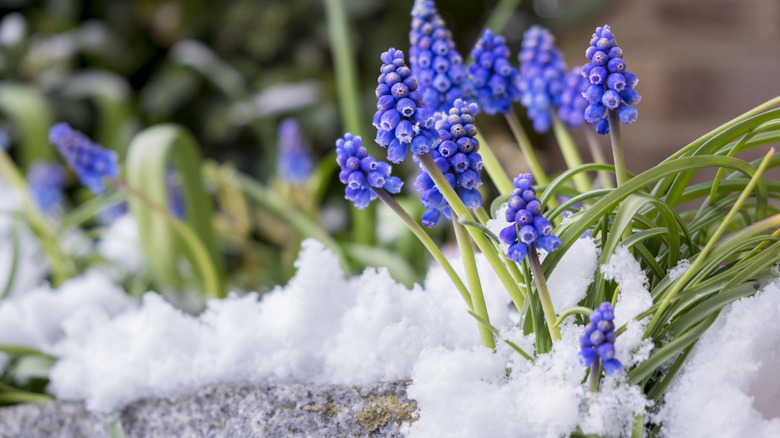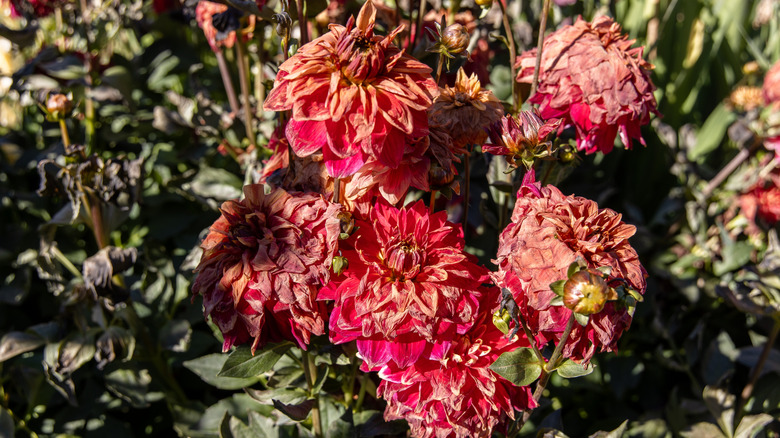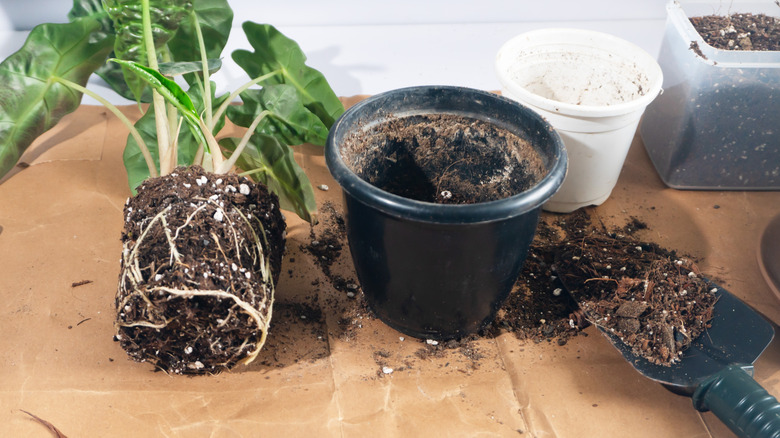Warning Signs That Your Plants Are Suffering From Cold Shock
It's that time of year when temperatures start to cool off, leaves turn gorgeous colors, and fall is in full swing. Winter is on its way! There are plenty of outdoor plants that thrive in winter weather. Some can even handle snow and ice. Problems start when there is a sudden and rapid temperature drop, or the temperatures go below what the plants' hardiness zones indicate they can handle safely. Damage that occurs from these sudden or extreme temperature drops is known as cold shock. Cold shock is not restricted to just outdoor plants. Indoor plants can suffer from cold shock if they are by an exterior door that allows sudden cold bursts of air, or if they are in front of a window that isn't insulated.
There are several warning signs to look for that can indicate your plants may be suffering from cold shock. Your plants don't have to show all the signs to be affected; some may show only one sign of cold shock. One of the first symptoms that may occur in a plant suffering from cold shock is wilting and drooping leaves. As the cells of the plant become damaged, the leaves lose their firmness and they droop or curl. If you have been following these ideas that make sure you never overwater your plants, and you know watering is not the issue, the culprit could be cold shock.
Additional warning signs of cold shock in your plants
The root ball is a plant's foundational support. When the roots are weak or damaged the whole plant suffers. After cold shock, the roots of the plants can freeze and become damaged. This damage can loosen the root ball and cause the entire plant to lean to the side or become unstable in the soil. If at least ¾ of the root ball is undamaged, the plant can still survive with immediate and gentle care. Other warning signs include splits in the stems of the plants and stunted growth — which is a little harder to detect since it can take a bit to notice the plant isn't growing the way it should.
Another warning sign of cold shock is discolored leaves. Discoloration from cold shock can show up in a number of ways. Depending on the plant and the extent of the damage, you may see yellow or white spots on the leaves, or the leaves may completely change color. Common discoloration spots can be black, red, or brown. A plant that has turned black and mushy has certainly experienced cold shock, and may not be salvageable.
How to help your plants recover from cold shock
If you have a plant or several that have been damaged by cold shock, you may be able to help them recover depending on how severe the damage is. The first thing your recovering plants need is water. Provide an inch or so of water for them to drink. If the root ball has been damaged, carefully trim off the dead roots and gently repot the plant in a new container with fresh soil. If you had potted plants outside that were damaged, now is the time to bring them indoors so they can recover, but do it slowly, bringing them into your garage first so they can acclimate. Next move them to a cool room in the house and again give them time before moving them to your desired spot.
Even though you will want to trim away all the dead stems and leaves right away, avoid pruning your plants while they are recovering. Heavy pruning at this time can cause plant stress. You want all the plant's attention and energy to go toward healing, which pruning can interrupt by causing new growth to start. The only time you should remove dead leaves or stems while the plants are recovering is if they are black and mushy. This indicates rot is present and it may spread to any healthy areas. Just proceed slowly, and if your cold-shocked plant hasn't incurred too much damage, it can come back.


